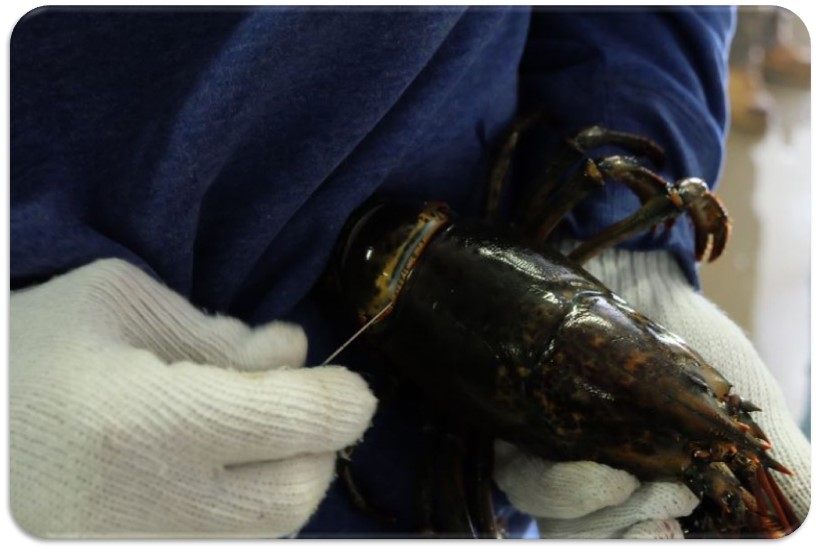Lobster Tagging and Demographics

Rationale
There is very little known about offshore lobster population demographics, maturity rates, and migration patterns. Most notably, nothing is known about offshore lobster populations during the closed fishing season. As sea temperatures continue to rise globally, there has been a marked movement of inshore lobster populations further offshore. Even ignoring the effects of climate change, lobster have been observed to migrate hugely variable distances; these migrations have been suggested to follow bottom temperature regimes. The primary goal of this project is to ensure a viable, sustainable, and healthy fishery by collecting and analyzing morphological data in relation to environmental data. More specifically, size, sex, maturity state, deformations and other biological characteristics will be collected alongside depth, temperature, geospatial data, and other environmental data. Furthermore, lobster will be tagged and mapped using a capture-mark-recapture protocol over multiple periods to allow for numerous periods in which lobster can move. This research also aims to form a collaboration between researchers and lobster fishing captains and crews through data collection and lobster tagging training. This collaboration will be facilitated by and involve Brazil Rock Lobster Association. Collaboration between researchers and lobster fishing captains and crews will help promote community outreach through which data will be communicated to the public.
Goals
- To characterize the offshore lobster stock including biological data (e.g. sizes, sex ratio, reproductive state, etc.) and associated fishing data (e.g. catch-per-unit-effort) both spatially and temporally.
- To relate specific environmental variables to the quantity and quality of lobster at various scales both spatially (e.g. specific sites to larger regions, and along gradient such as distance from shore or depth) and temporally (e.g. seasonally).
- To study lobster growth to improve understanding of maturation rates and other population demographics.
- To characterize movement patterns of lobster spatially and temporally
Methods
The project will deploy localized, per trap temperature logging devices on select traps within a trap line at various depths and sites within and outside of the fishing season. Trap-specific records will be kept for selected trap lines and all traps with loggers. Lobster will be tagged with streamer tags from Floytag Inc. to characterize growth and movement. Lobster will be tagged within and outside of the regular fishing season, and at specific sites designated through local knowledge of commercial fishers. Biological sampling of each lobster including size, sex and quality assessments, lobster counts, trap by-catch (non-target organisms), and environmental variables (e.g. depth, temperature, weather conditions) and geospatial position of each trap will be compiled for analyses.